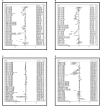Animal Toxicology Studies on the Male Reproductive Effects of 2,3,7,8-Tetrachlorodibenzo-p-Dioxin: Data Analysis and Health Effects Evaluation
- PMID: 34803904
- PMCID: PMC8595279
- DOI: 10.3389/fendo.2021.696106
Animal Toxicology Studies on the Male Reproductive Effects of 2,3,7,8-Tetrachlorodibenzo-p-Dioxin: Data Analysis and Health Effects Evaluation
Abstract
2,3,7,8-Tetrachlorodibenzo-p-dioxin (TCDD) is a well-known environmental poison that exist in the environment for many years. However, its effect on the male reproductive system has not been clearly stated. We conducted a meta-analysis of the effect of TCDD on the male reproductive system of rodents about TCDD. Results showed that that TCDD exposure reduced the testis weight (weighted mean difference [WMD]: -0.035, 95% confidence interval [CI]: -0.046 to -0.025), sperm count (WMD: -35, 95% CI: -42.980 to -27.019), and blood testosterone concentration (WMD: -0.171, 95% CI: -0.269 to -0.073). According to our research results, TCDD can cause damage to the male reproductive system of rodents through direct or indirect exposure. In order to further explore the potential hazards of TCDD to humans, more human-related research needs to be carried out.
Keywords: dioxin; environmental pollutant; meta-analysis; reproductive toxicity; semen parameter.
Copyright © 2021 Zhang, Zhou, Ren, Zhang, Wu, Wang and Wang.
Conflict of interest statement
The authors declare that the research was conducted in the absence of any commercial or financial relationships that could be construed as a potential conflict of interest.
Figures



Similar articles
-
Adult 2,3,7,8-tetrachlorodibenzo-p-dioxin (TCDD) exposure and effects on male reproductive organs in three differentially TCDD-susceptible rat lines.Toxicol Sci. 2004 Oct;81(2):401-7. doi: 10.1093/toxsci/kfh212. Epub 2004 Jul 7. Toxicol Sci. 2004. PMID: 15240895
-
Pattern of male reproductive system effects after in utero and lactational 2,3,7,8-tetrachlorodibenzo-p-dioxin (TCDD) exposure in three differentially TCDD-sensitive rat lines.Toxicol Sci. 2004 Jul;80(1):101-8. doi: 10.1093/toxsci/kfh142. Epub 2004 Apr 14. Toxicol Sci. 2004. PMID: 15084753
-
Aminoguanidine prevents testicular damage-induced-2,3,7,8-tetrachlorodibenzo-p-dioxin (TCDD) in male rats.Andrologia. 2013 Aug;45(4):225-31. doi: 10.1111/j.1439-0272.2012.01334.x. Epub 2012 Jul 4. Andrologia. 2013. PMID: 22762285
-
Experimental and clinical studies on the reproductive toxicology of 2,3,7,8-tetrachlorodibenzo-p-dioxin.Am J Ind Med. 1987;11(2):131-44. doi: 10.1002/ajim.4700110203. Am J Ind Med. 1987. PMID: 3548340 Review.
-
Adverse health effects in humans exposed to 2,3,7,8-tetrachlorodibenzo-p-dioxin (TCDD).Rev Environ Health. 2006 Apr-Jun;21(2):119-38. doi: 10.1515/reveh.2006.21.2.119. Rev Environ Health. 2006. PMID: 16898675 Review.
Cited by
-
Modulation of Ceramide-Induced Apoptosis in Enteric Neurons by Aryl Hydrocarbon Receptor Signaling: Unveiling a New Pathway beyond ER Stress.Int J Mol Sci. 2024 Aug 6;25(16):8581. doi: 10.3390/ijms25168581. Int J Mol Sci. 2024. PMID: 39201268 Free PMC article.
-
Effects of dioxins on animal spermatogenesis: A state-of-the-art review.Front Reprod Health. 2022 Oct 21;4:1009090. doi: 10.3389/frph.2022.1009090. eCollection 2022. Front Reprod Health. 2022. PMID: 36339774 Free PMC article. Review.
-
Transcriptomic and functional analysis of triphenyl phosphate exposure in prostate cancer progression.Discov Oncol. 2025 Aug 7;16(1):1497. doi: 10.1007/s12672-025-03325-1. Discov Oncol. 2025. PMID: 40775179 Free PMC article.
-
Advancing Environmental Toxicology In Vitro: From Immortalized Cancer Cell Lines to 3D Models Derived from Stem Cells.Environ Health (Wash). 2024 Feb 28;2(6):332-349. doi: 10.1021/envhealth.3c00199. eCollection 2024 Jun 21. Environ Health (Wash). 2024. PMID: 39473468 Free PMC article. Review.
-
Insight into 2,3,7,8-tetrachlorodibenzo-p-dioxin-induced disruption of zebrafish spermatogenesis via single cell RNA-seq.PNAS Nexus. 2022 Jun 22;1(3):pgac060. doi: 10.1093/pnasnexus/pgac060. eCollection 2022 Jul. PNAS Nexus. 2022. PMID: 35799832 Free PMC article.
References
-
- U.S.E.P. Agency(EPA) . Epa’s Reanalysis of Key Issues Related to Dioxin Toxicity and Response to NAS Comment, Volume 1. Environmental Protection Agency(EPA). Washington, DC: U.S. Environmental Protection Agency; (2012), EPA/600/R-10/038F.
Publication types
MeSH terms
Substances
LinkOut - more resources
Full Text Sources

